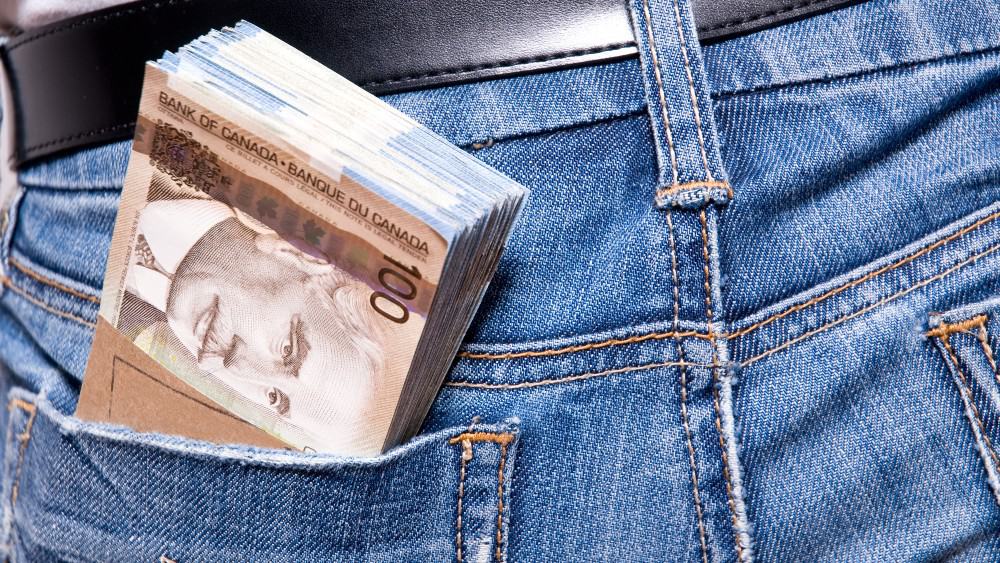The Tax-Free Savings Account (TFSA) when introduced in 2009 was actually meant to be a retirement portfolio to create tax-free income in retirement. However, since then, it’s been turned into a financial goal creator, and it seems as if everyone has forgotten about the benefits to retirement.
If you’re looking to create some extra cash in retirement, the TFSA can certainly be one of the best options to start an income stream. But how do you even start?
Today, let’s look at how you can get there.
Got some savings?
If you have some savings set aside, then use them. There are still some stocks out there that remain down — in fact, quite a few are down — but that doesn’t mean you should ignore them. Over time, the market trends upward. So, let’s say you’re looking to put your savings to work over the next decade.
That could mean you’re in retirement. It could mean you’re nearing retirement. But whatever the case, if you’re looking to create passive income each month of $100, you’re going to need to be consistent in your investments.
Use your savings to put a lump sum towards a strong stock that provides monthly passive income right now. From there, add monthly investments that could increase it over time. Then after a decade, you’re sure to reach that $100-per-month mark.
A stock to consider
One stock I would consider is iShares S&P/TSX Composite High Dividend Index ETF (TSX:XEI). Shares are down 3.5% in the last year, currently offering a dividend yield of 5.18%. This comes from investing in the largest dividend producers in the country, with a management team there to set you up for dividend success.
Shares of the exchange-traded fund (ETF) are up about 26% since coming on the market about a decade ago. While that isn’t huge growth, it’s stable growth, with few drops in the market, unless there is a crash. Furthermore, you can still look forward to your dividends coming in at that point.
Over the last decade, shares have increased at a compound annual growth rate (CAGR) of 2.4%, with its dividend CAGR at 2.86%. So, let’s see what it would take to create that $100 per month.
Bottom line
Reaching $100 per month will mean creating $1,200 in annual passive income. To do that, we’ll start with an investment that we add to each year. That will mean putting aside cash month after month and potentially investing as you go. You’ll also invest dividend income as you go to create that $100 per month sooner. This is what that might look like based on historical performance.
| Year | Share Price | Shares Owned | Annual Dividend Per Share | Annual Dividend | After DRIP Value | Annual Contribution | Year End Stock Price | New Shares Purchased | Year End Shares Owned | New Balance |
| 1 | $24 | 226 | $1.22 | $276.62 | $5,699.72 | $1,000 | $24.58 | 51.94 | 277.95 | $6,976.40 |
| 2 | $24.58 | 277.95 | $1.26 | $350.22 | $7,326.62 | $1,000 | $25.17 | 53.64 | 331.59 | $8,676.74 |
| 3 | $25.17 | 331.59 | $1.29 | $427.75 | $9,104.49 | $1,000 | $25.77 | 55.40 | 386.99 | $10,532.16 |
| 4 | $25.77 | 386.99 | $1.33 | $514.69 | $11,046.85 | $1,000 | $26.39 | 57.39 | 444.38 | $12,561.37 |
| 5 | $26.39 | 444.38 | $1.37 | $608.80 | $13,170.17 | $1,000 | $27.02 | 59.54 | 503.92 | $14,778.94 |
| 6 | $27.02 | 503.92 | $1.41 | $710.53 | $15,489.47 | $1,000 | $27.67 | 61.82 | 565.74 | $17,200.03 |
| 7 | $27.67 | 565.74 | $1.44 | $814.67 | $18,014.70 | $1,000 | $28.33 | 64.05 | 629.79 | $19,829.24 |
| 8 | $28.33 | 629.79 | $1.49 | $935.33 | $20,767.57 | $1,000 | $29.01 | 66.71 | 696.50 | $22,702.83 |
| 9 | $29.01 | 696.50 | $1.53 | $1,065.65 | $23,768.48 | $1,000 | $29.71 | 69.53 | 766.03 | $25,834.22 |
| 10 | $29.71 | 766.03 | $1.57 | $1,202.67 | $27,036.89 | $1,000 | $30.42 | 72.41 | 838.44 | $29,239.60 |
If you purchased 226 shares today at $24, that would mean an investment of $5,424 as of writing. You’ll then reinvest $1,000 annually each year for 10 years. By then, you’ll have $1,202 in annual passive income, coming out as about $100 each month. Plus, you’ll have a $29,239.60 portfolio in the ETF by then.
 Claim Membership Credit
Claim Membership Credit








